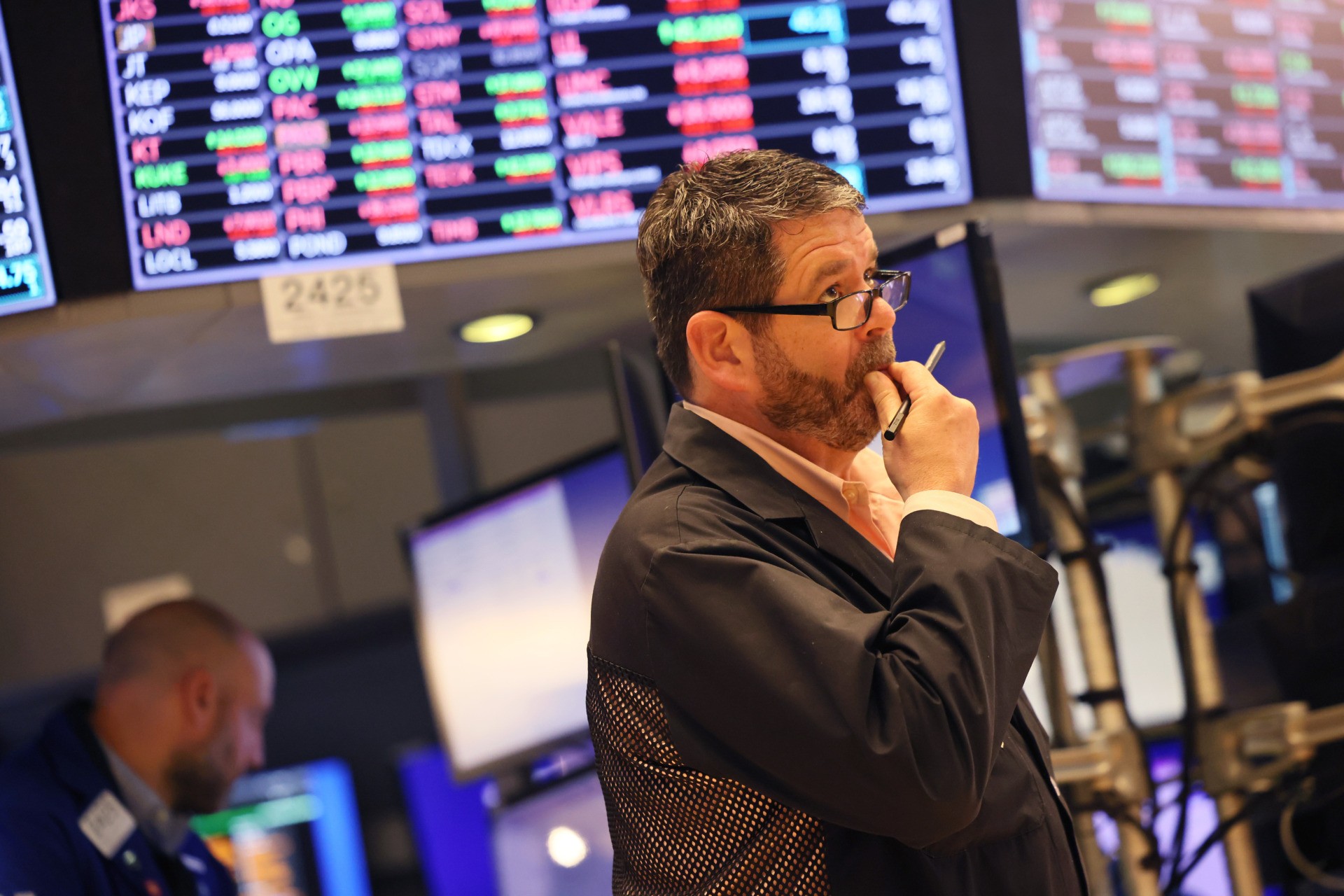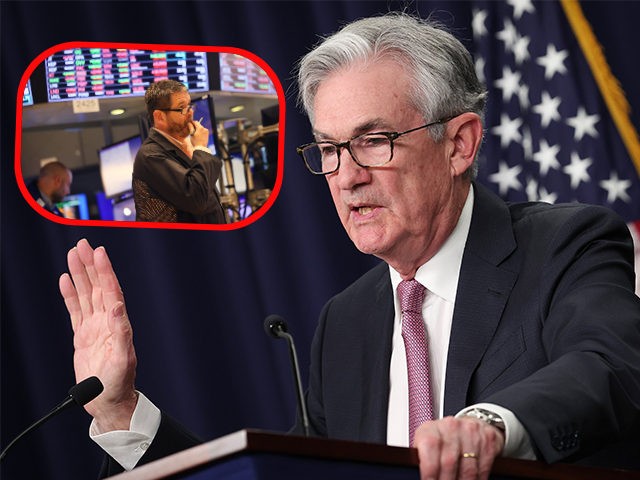The faith of the followers of Fed Chairman Jerome Powell is fickle.
Yesterday, Powell set the market on fire with hope by putting a ceiling on rate hikes. The Fed would probably raise rates by 50 basis points a couple of more times, Powell said, before dropping the hikes down to 25 basis points when inflationary pressures showed signs of lifting, likely around September. The idea of a 75 basis point hike, which had been the talk of Wall Street in the week or so prior to the meeting, was not even a subject of polite conversation at the central bank.
Cue the Dow Jones Industrial Average soaring 923 points, the S&P 500 gaining nearly three percent, and the Nasdaq Composite rising 3.19 percent. It was as if all the no good, rotten, very bad developments that had dragged down the market in April—Russia’s Ukraine attack, the looming recession, China’s lockdowns, out-of-control inflation, shortages of commodities—had been exorcised by Powell’s promise to expeditiously raise rates and still achieve a “softish” landing.
Thursday brought the deluge that extinguished those flames of hope. Turns out the exorcism did not take. Oil topped $115 a barrel after OPEC made it clear that it still was not taking President Joe Biden’s calls. Yields on the 10-year and 5-year Treasury topped three percent for the first time since 2018, as investors sniffed out the idea that the Fed might someday have to broach the topic of even larger rates hikes and a higher terminal rate since inflation appears to be getting worse rather than better. Stocks had their worst sell-off since 2020, completely erasing all of the Powell-inspired gains and then some.

Traders work the floor of the New York Stock Exchange during morning trading on May 5, 2022 in New York City. Stocks opened lower after closing high on Wednesday following the Federal Reserve’s announcement of an interest-rate hike to lower inflation. (Michael M. Santiago/Getty Images)
The wipe-out in stocks was so complete that there’s a risk of losing sight of the fact that there was other bad news today. The government’s measure of productivity for the first quarter sank 7.5 percent, far more than the 2.5 percent expected. Productivity is a blunt measure of economic performance that balances hours worked against total output. So, a big decline in productivity is unwelcome at any time, but it is particularly bad for a quarter where we already know the economy contracted 1.4 percent. Ironically, one of the culprits in the productivity decline was likely the huge amount of hiring that went on in the first three months of the year. Employers brought on nearly 1.7 million new workers in the first quarter, an average of 562,000 a month. Getting the new hires up to speed likely cost us on the productivity side.
Also, many of those jobs were in some of the least productive parts of the economy, like leisure and hospitality. We tend not to like to think of the bartender at our local saloon as unproductive, and certainly the waitress at the local diner seems to get more done in an hour than we would; but those are low productivity jobs as measured by the government’s official statistics.
The government will release the official jobs figures for April tomorrow. The betting line is currently at 400,000 new jobs, a slight decline from last month’s 431,000, and an unemployment rate of 3.6 percent, even with March. That would be a tremendous amount of hiring in any environment, but it is Olympian when unemployment is already so low. Certainly, however, the job vacancy numbers at the end of March—11.5 million job openings—suggest that employers are still very hungry for new workers.
An important question will be what happens to hourly earnings. The consensus forecast is for earnings to rise 0.4 percent from a month ago and to be up 5.6 percent from a year ago. That would mean earnings are rising but not accelerating. Given the extreme tightness of the labor market, an acceleration might seem more likely. Perhaps, however, the fact that many of the recently added jobs are on the lower end of the wage scales will serve as a counterweight and keep the average from accelerating.
Elon’s Friends in High Places
We’ve been arguing for weeks that Elon Musk would have no trouble attracting capital to partner with him in his takeover of Twitter. Investors have been tripping over themselves to place funds in his private ventures for years and have bid Tesla shares up to 112.52 times earnings. Musk is a super magnet for investment.
That is why we were not surprised to learn that Musk had raised $7 billion from investors for his Twitter bid. Some of that will be simply current stakes in the public stock that will get rolled over into the private company post-merger. Some of it, apparently, is new capital coming in. Most of it is from investors who are not necessarily true believers in Musk’s professed reason for taking over Twitter—to make it a bastion of free speech—and instead are believers in the financial prospects of the company under Musk’s tutelage.

COMMENTS
Please let us know if you're having issues with commenting.